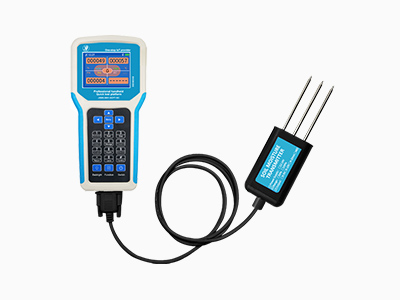Soil is a vital component of our planet’s ecosystem, playing a crucial role in everything from agriculture to carbon sequestration. However, climate change is putting increasing pressure on the health of our soil, and by extension, our ability to sustainably produce food and mitigate carbon emissions. Fortunately, soil sensors are emerging as a valuable tool in the fight against climate change.

Soil sensors are devices that are used to measure and monitor various parameters of soil health,
such as moisture content, temperature, pH level, nutrient levels, and more. By providing real-time data on soil conditions, these sensors can help farmers and land managers to make more informed decisions about irrigation, fertilization, and other key aspects of soil management.
One of the main ways that soil sensors can help combat climate change is by improving agricultural efficiency.
Agriculture is a major contributor to greenhouse gas emissions, with practices such as tilling and synthetic fertilizer use releasing carbon into the atmosphere. By using soil sensors to optimize irrigation and nutrient application, farmers can reduce their use of water, fertilizer, and other resources, thus reducing their carbon footprint. Additionally, sensors can help farmers to identify areas of their fields that are experiencing stress or nutrient deficiencies, allowing for targeted interventions that can improve yields and reduce waste.
Another key application of soil sensors in the fight against climate change is soil carbon sequestration.
Healthy soils play an important role in capturing and storing carbon from the atmosphere, helping to mitigate the impacts of climate change. However, degraded soils that are overworked or lacking in nutrients are less effective at storing carbon. By monitoring the health of soil with sensors, land managers can take action to maintain or improve soil health, thus enhancing its ability to sequester carbon.
Soil sensors are also being used to improve our understanding of how different land management practices impact soil health and carbon sequestration. For example, researchers are using sensors to compare the effects of conventional tillage versus no-till farming on soil health and carbon storage. These studies are providing valuable insights into how different land management practices can be used to mitigate climate change and promote sustainable agriculture.
Finally, soil sensors are playing an important role in helping land managers to adapt to the impacts of climate change. As temperatures rise and weather patterns become more erratic, it is becoming increasingly important to understand how soil conditions are changing over time. By using sensors to monitor soil moisture levels, temperature, and other factors, land managers can identify areas that are at risk of drought or other types of stress, and take action to mitigate these impacts before they become severe.

In conclusion, soil sensors are a powerful tool in the fight against climate change. By providing real-time data on soil health and carbon sequestration, these sensors are helping farmers, land managers, and researchers to make more informed decisions about agricultural practices and land management strategies. With continued development and deployment of soil sensor technology, we can work towards a more sustainable future for our planet and the life it supports.
